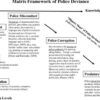Follow
S-5
5S is a system for organizing spaces so work can be performed efficiently, effectively, and safely. This system focuses on putting everything where it belongs and keeping the workplace clean, which makes it easier for people to do their jobs without wasting time.
The five pillars in 5S in a continuous improvement program, which stand for: Sort, Set in Order, Shine, Standardize, and Sustain — or in Japanese, Seiri, Seiton, Seiso, Seiketsu, and Shitsuke. The goal of a 5S program is to get products closer to operations and workers, organized and labeled, to eliminate wasted time and materials. The 5S philosophy is “a place for everything and everything in its place,” and helps to eliminate wasted time, wasted space, and wasted inventory. Implementing 5S raises product quality and improves work productivity, resulting in lower costs and higher efficiencies.
- Sort: Start by removing all items from your work area. Inspect the equipment and identify those items that are critical to the success of the function performed at the workstation. Eliminate any duplicates, unnecessary equipment, infrequently used items, and trash. Identify the non-essential items as either waste or “valuable but not critical.” Store the non-critical items outside of the workstation area. This saves time, space, and labor costs, while enhancing productivity.
- Set in Order: Whatever equipment is deemed critical to the operation must now be organized. Assign positions for all equipment, work in progress, and raw materials, keeping ease of reach, identification, and proximity to work surface in mind as you do. The goal is to maximize the efficiency of the workstation layout. On a smaller scale, it’s the same concept as warehouse layout. The most frequently used tools should be the most convenient to grab. This eliminates wasted time from excess motion and searching.
- Shine: Keep everything clean, every day. Doing this keeps things ready to be used when needed. A clean workspace is a productive workspace, and Seiso literally means “to clean or shine.” Clean the floors, the walls and the equipment, and ensure all items are restored to their designated place. Make sure the workstation is well lit. This should be a part of your daily tasks and should not be postponed until idle time is available.
- Standardize: Ensure conditions of work area do not return to the original, disorganized state. Make the previous three S’s part of your standard procedures each day. Implement them with the help of signs, banners, shadow boards, tool holders, etc. Make sure all workers understand their responsibilities and are empowered to perform all of the tasks.
- Sustain: Make a habit of properly maintaining correct procedures to avoid backsliding. Implementing these steps is a continuous process. It is important to ensure that they are done each day to prevent slipping into old habits. Commit to performing these steps every shift and make sure that any changes to your product or process are compensated for at your workstation and problems are alleviated as quickly as they are created.
5S is typically the first step towards eliminating waste from manufacturing processes and eventually leads to improving bottom line results. 5S is a foundation of kaizen, which is the practice of continuous improvement based on certain guiding principles, which include:
- Good processes bring good results
- See for yourself to grasp the current situation
- Speak with data, manage with facts
- Take action to contain and correct root causes of problems
- Work as a team
- Kaizen is everybody’s business
Kaizen is founded upon five primary elements:
- Quality Circles: These are groups which meet to discuss quality levels concerning all aspects of a company’s running.
- Improved Morale: Strong morale amongst the workforce is a crucial step to achieving long-term efficiency and productivity, and kaizen sets it as a foundational task to keep constant contact with employee morale.
- Teamwork: A strong company is a company that pulls together every step of the way. Kaizen aims to help employees and management look at themselves as members of a team, rather than competitors.
- Personal Discipline: A team cannot succeed without each member of the team being strong in themselves. A commitment to personal discipline by each employee ensures that the team will remain strong.
- Suggestions for Improvement: By requesting feedback from each member of the team, the management ensures that all problems are looked at and addressed before they become significant.
In essence, everyone in the organization should be involved in making improvements every day and everywhere in the facility. In addition to these primary elements, there are a number of principles that exist, including the five rules for a good environment, which are called the 5S Pillars.
1. Sort: What is the Purpose of the Area
2. Set in Order: Separate the Necessary from the Unnecessary
3. Shine: Clean the Workplace to Maintain and Identify Defects
4. Standardize: A Place for Everything to Ensure Access and Identify Nonconformance
5. Sustain: Maintain the Standard and Continue to Improve Every Day
Benefits of 5S
√ A tool that creates and sustains visual management.
√ A systematic method that allows teams to organize the workplace in the safest, most effective manner.
√ 5S lays the foundation for new ways of thinking where we adhere to standards and use deviation occurrences to improve.
√ Reduced costs
√ Higher Quality
√ Greater employee satisfaction
The end result of a 5S implementation is a significant reduction in space needed for existing operations. Workers improve their workspaces by cleaning and organizing them. Tools and materials are labeled and stored in organized storage locations. Shelving and racks optimize the storage of items in a smaller footprint, helping to improve the order picking process by eliminating the need to search for items.
REFERENCES:
5S Today















